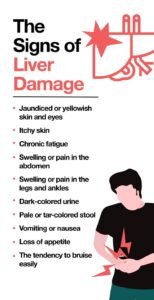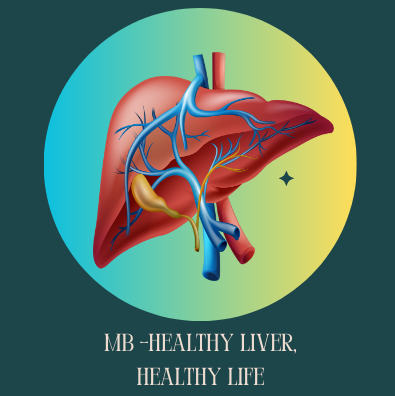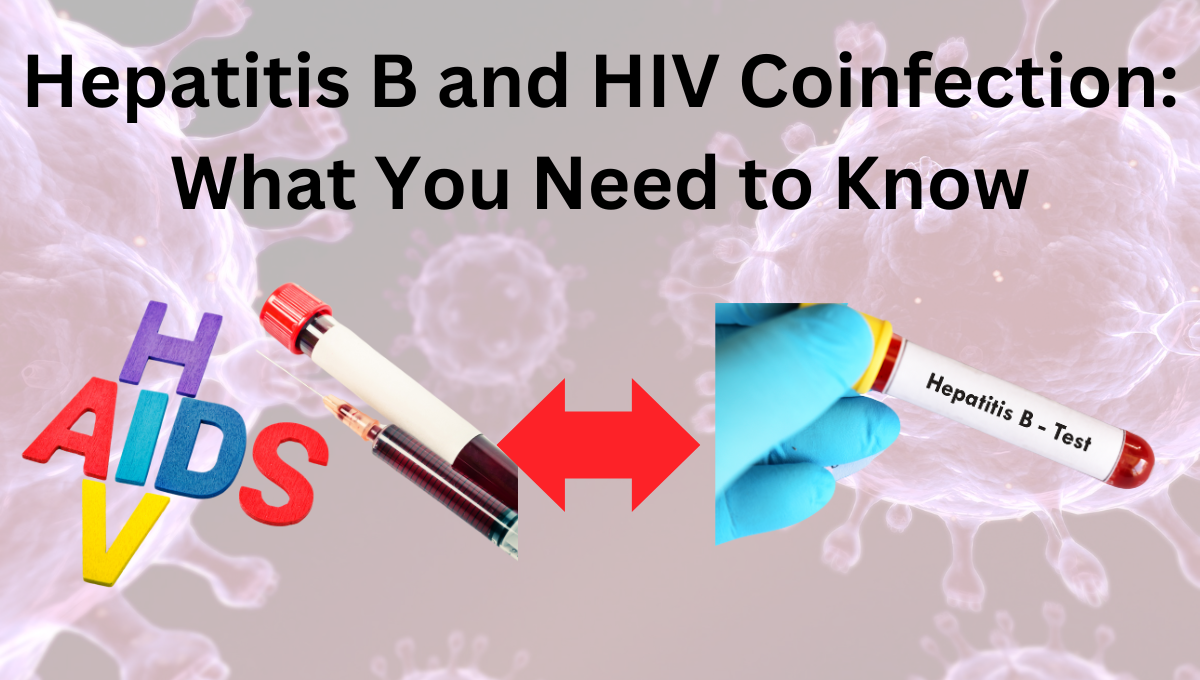Hepatitis B and HIV Coinfection: What You Need to Know
Overview
The Human Immunodeficiency Virus (HIV) and Hepatitis B (HBV) are two viral illnesses that impact millions of individuals globally. In terms of health management, treatment, and general quality of life, coinfection—the co-occurrence of HIV and Hepatitis B—presents special difficulties. Although each virus affects the liver and immune system separately, when combined, they can hasten liver damage and make therapy more difficult. Understanding this illness is crucial for raising public awareness, enhancing healthcare services, and lowering stigma.
Knowledge about HIV and Hepatitis B
Let’s examine each of these illnesses separately before delving into coinfection.

Hepatitis B: What is it?
The Hepatitis B virus (HBV) is the causative agent of hepatitis B, a viral infection that mostly damages the liver. If treatment is not received, it can result in both acute and chronic liver damage, which can lead to problems like liver failure, cirrhosis (liver scarring), and liver cancer. Contact with contaminated blood or body fluids, as well as, less frequently, sexual contact, can spread HBV.
Typical transmission pathways consist of:
Transmission from mother to child during childbirth
Sharing syringes or needles
Transfusions of blood (in areas without stringent screening procedures)
Sexual interaction with an infected partner without protection
The majority of individuals with HBV can recover from the virus on their own, but others get chronic Hepatitis B, which needs to be monitored and treated for the rest of their lives to avoid liver damage.
HIV: What is it?
The HIV virus preferentially targets CD4 cells, also known as T-helper cells, which are essential for warding off infections. HIV weakens the immune system over time, making the body more susceptible to infections and several types of cancer. The most severe stage of HIV infection, AIDS (Acquired Immunodeficiency Syndrome), develops if treatment is not received.
The primary ways that HIV is spread are:
Sexual interaction with an infected partner without protection
Sharing syringes or needles
Transmission from mother to child during lactation or delivery
Transfusions of blood (in areas with limited screening)
People with HIV can manage their virus, live longer, and enjoy a quality of life comparable to those without the virus by using antiretroviral medication (ART).
What is the connection between HIV and Hepatitis B?
When a person has both HIV and HBV, it is known as hepatitis B and HIV coinfection. Due to shared modes of transmission, coinfection is rather widespread, especially among injecting drug users, residents of high-prevalence areas, and men who have sex with men (MSM). Because each virus can exacerbate the consequences of the other, coinfection with HIV and HBV presents special health difficulties and complicates treatment.
The Significance of HIV and Hepatitis B Coinfection
When HIV and HBV coexist, certain issues arise:
Accelerated Liver Disease: In individuals with HBV, HIV can hasten the development of liver disease. Chronic HBV infections are more common in people with HIV, and they can hasten the development of liver cirrhosis, liver failure, and liver cancer. Because of this, liver health is a major issue for those who have both infections.
Complex Treatment Procedures: A lot of antiretroviral medications that are used to treat HIV can also be utilized to treat HBV. To prevent drug resistance, toxicity, and interactions, the choice of therapy must be carefully considered, as not all HIV drugs target HBV. To guarantee that both viruses are successfully managed, those who have both infections need to be closely watched.
Increased Viral Loads and Resistance: Coinfection may lead to increased HBV viral loads, indicating that the virus is more prevalent in the body. This may make therapy more difficult and raise the possibility of liver-related issues. Drug resistance is also an issue because if one or both viruses become resistant, some drugs may not function as well.
Effect on Immune System: HIV weakens the immune system, making it less capable of defending against HBV. An increased risk of liver-related morbidity and mortality as well as more severe liver disease may result from this.
Hepatitis B and HIV Coinfection Symptoms
Depending on the stage of each infection, the symptoms of HBV and HIV coinfection can differ greatly. Typical signs and symptoms include:

Weakness and fatigue: These symptoms are frequent in both HIV and HBV infections, and they can be made worse by liver damage or inflammation.
Liver problems are linked to abdominal pain, especially in the upper right section of the abdomen.
Jaundice: HBV-induced liver dysfunction may manifest as yellowing of the skin and eyes.
Weight loss and appetite loss: HIV and HBV can cause inadvertent weight loss and decreased appetite.
Vomiting and nausea are typical signs of liver injury or stress.
For those who are at risk, routine examinations are crucial since coinfected individuals may not show symptoms until liver disease has progressed.
HIV and HBV Coinfection Diagnosis
Blood tests are used to diagnose HBV and HIV coinfection in order to measure liver function and identify the presence of each virus. Important tests consist of:
HBV Serologic Tests: These tests assist in identifying whether an individual has a chronic or current HBV infection.
HIV RNA and antibody tests are used to measure viral load and confirm HIV infection.
Tests for liver function measure the proteins and enzymes that may point to inflammation or injury in the liver.
Viral load tests: To measure the levels of HIV and HBV in the blood, which aids in tracking how well a treatment is working.
It is advised that high-risk persons, such as those with a history of injectable drug use, several sexual partners, or prior blood transfusions, be screened for both viruses.
Management of HIV Coinfection with Hepatitis B
Because it is difficult to treat two viruses at once, treating HBV and HIV coinfection calls for a coordinated strategy. Controlling both infections, avoiding liver damage, and lowering the chance of consequences are the main objectives.

ART, or antiretroviral therapy
Many ART regimens indicated for HIV also have activity against HBV in those who are coinfected. Since they work against both viruses, drugs like tenofovir and lamivudine (also known as emtricitabine) are recommended for coinfected patients. These drugs lessen liver inflammation and maintain immunological function by inhibiting viral replication in both HIV and HBV.
Observation and Liver Health
Individuals who are coinfected need to have their liver function and viral levels for HIV and HBV regularly monitored. In order to track liver health over time and look for indications of cirrhosis or liver cancer, medical professionals may employ fibrosis score or liver ultrasounds.

Changes in Lifestyle
Adopting liver-friendly behaviors, such as abstaining from alcohol, eating a balanced diet, and keeping a healthy weight, is suggested for patients. These lifestyle changes can improve general health and lessen liver stress.
Immunization
Although there is presently no treatment for either HIV or HBV, the Hepatitis B vaccine can help HIV-positive individuals who have not yet contracted HBV. All people living with HIV who are HBV-negative are advised to have this vaccine, which helps prevent HBV infection.
Handling Side Effects and Drug Interactions
In coinfected individuals, careful monitoring of adverse effects is essential due to the possibility of drug interactions. If side effects or interactions become an issue, the doctor may change medications or modify dosages.
Keeping HIV and HBV from Coinfecting
Reducing the risk factors for both HIV and HBV is essential to preventing coinfection. Important preventative techniques include:
Safe Injection Procedures: The risk of HIV and HBV is considerably decreased by not sharing syringes, needles, or other drug paraphernalia.
Safe Sexual Practices: Consistent and proper condom use reduces the risk of both viruses spreading during intercourse.
Vaccination: Hepatitis B vaccination is a good method to avoid contracting HBV, particularly for people who are more susceptible.
Regular Screening: For high-risk individuals, routine screening is crucial for early HIV and HBV diagnosis. Early detection of either virus enables prompt treatment to avoid consequences from coinfection.
Living with HIV and Hepatitis B Coinfection
Effective management of both HIV and HBV is necessary when living with coinfection, and this is frequently achieved by medication adherence, lifestyle changes, and routine check-ups with the doctor. Managing two chronic infections can have a substantial emotional toll, and mental health assistance is an important part of treatment. Counseling, support groups, and interacting with people who share these difficulties can all improve general wellbeing.
In conclusion
Although co-infection with HIV and hepatitis B presents complicated health issues, people can live happy, fulfilling lives if they are properly managed. Antiretroviral medication advancements, close observation, and lifestyle modifications all contribute to fewer consequences and a higher standard of living for individuals impacted. In order to manage and prevent HBV and HIV coinfection, awareness, prevention, and routine medical care are essential.
 https://analytics.google.com/analytics/web/#/analysis/p405220706
Skip to content
https://analytics.google.com/analytics/web/#/analysis/p405220706
Skip to content 
